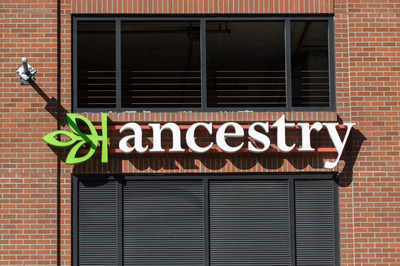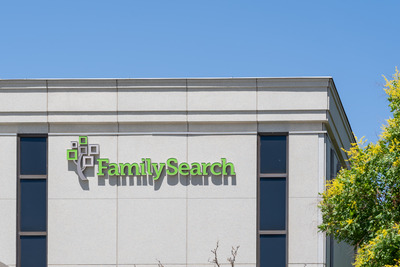Comprehensive Analysis of Online Genealogy Platforms
A Professional Assessment of Major Genealogy Research Websites
For genealogical researchers in the United States, online platforms have revolutionized access to historical records and research capabilities. Each major genealogy website offers distinct advantages and limitations that can significantly impact research efficiency and success. This analysis examines four leading platforms—Ancestry.com, FamilySearch.org, MyHeritage, and Findmypast—evaluating their strengths, limitations, and particular value for U.S.-based research.
Understanding the unique characteristics of each platform allows researchers to maximize their research effectiveness while managing subscription costs. This comparison considers factors including record availability, search functionality, collaboration tools, and integration capabilities.
Ancestry.com: Comprehensive U.S. Coverage with Premium Features
Ancestry.com maintains its position as the industry leader in U.S. records coverage and research tools. The platform’s extensive collection of American records, combined with sophisticated search capabilities and integration features, makes it a cornerstone resource for U.S.-focused research.
Strengths
The platform’s U.S. census collection stands out for its completeness and search accuracy. Every available federal census (1790-1950) includes both images and multiple index versions, enabling researchers to overcome transcription errors through alternate search strategies. State census collections, while not comprehensive, offer substantial coverage for key states.
Ancestry’s military records collection excels in U.S. content, particularly for the Civil War period. The integration of pension files, service records, and related documents provides crucial context for ancestral research. The platform’s collection of draft registration cards and military burial records offers comprehensive coverage across multiple conflicts.
The ThruLines feature effectively combines traditional genealogical records with DNA research, providing valuable insights for breaking through research barriers. This integration of genetic genealogy with documentary evidence represents a significant advantage for complex research problems.
Limitations
Subscription costs represent a significant consideration, particularly for researchers requiring international records access. The segregation of U.S. and international records into different subscription tiers can increase research costs for those tracking immigrant ancestors.
Search algorithms occasionally prioritize broad matches over exact results, requiring researchers to implement sophisticated filtering strategies. The platform’s suggested records can sometimes lead researchers astray without careful verification.
FamilySearch.org: Extensive Free Access with Collaborative Focus
FamilySearch.org’s free access model and extensive record collections make it an essential resource for U.S. researchers. The platform’s unique approach to collaborative genealogy offers both advantages and challenges for serious researchers.
Strengths
The platform’s free access to extensive record collections, including many unique records not available elsewhere, provides exceptional value. The ongoing digitization of microfilm collections continues to expand available resources, particularly for U.S. county-level records.
FamilySearch’s wiki provides invaluable research guidance, particularly for understanding record availability and research strategies at the state and county level. The platform’s learning resources offer exceptional support for developing research skills.
The integration with Family History Centers provides access to restricted records and additional databases, offering researchers comprehensive research capabilities without subscription costs.
Limitations
The single-tree collaborative model can create challenges for maintaining research accuracy. Changes made by other users can affect your research, requiring vigilant monitoring and documentation of sources.
Image access restrictions on some record collections require visits to Family History Centers, which may not be convenient for all researchers. These access limitations can impact research efficiency.
MyHeritage: International Strength with Growing U.S. Coverage
MyHeritage combines strong international records coverage with innovative research tools, offering particular value for researchers tracing immigrant ancestors. The platform’s technology features provide unique research capabilities.
Strengths
The platform’s photo enhancement and colorization tools offer unique capabilities for family history preservation. These features provide particular value for researchers working with historical photographs and documents.
MyHeritage’s international records coverage excels, particularly for European research. The combination of U.S. and international records in a single subscription provides value for researchers tracing immigrant ancestors.
The platform’s Record Detective technology effectively identifies connections between related records, often revealing overlooked research paths. The automatic record matching system shows particular sophistication in handling name variations.
Limitations
U.S. records coverage, while growing, remains less comprehensive than Ancestry.com. Researchers focused primarily on U.S. records may find some collections incomplete.
The platform’s tree-to-tree discovery features sometimes propagate unverified information, requiring careful verification of shared research.
Findmypast: British Isles Expertise with Growing U.S. Collections
Findmypast’s specialized focus on British and Irish records makes it a valuable resource for researchers tracing ancestors from these regions. The platform’s expanding U.S. collections provide increasing value for American researchers.
Strengths
The platform’s British and Irish records coverage exceeds other providers, offering crucial resources for researchers tracing ancestors from these regions. The newspaper collection, in particular, provides exceptional coverage of historical British publications.
Findmypast’s partnership with various British archives provides access to unique records not available elsewhere. The platform’s transcription accuracy for British records shows particular attention to historical naming conventions and locations.
The integration of Catholic heritage records provides valuable resources for researchers tracing Irish ancestors, often providing crucial information for breaking through research barriers.
Limitations
U.S. records coverage, while improving, remains focused primarily on records connecting to British heritage. Researchers working exclusively with U.S. records may find the collection limited.
Search functionality sometimes reflects British rather than American research patterns, requiring adaptation of search strategies for optimal results.
Platform Integration and Research Strategy
For comprehensive U.S.-based research, utilizing multiple platforms often provides optimal results. Each platform’s unique strengths can complement the others’ limitations, creating a more complete research capability.
Ancestry.com’s extensive U.S. records and DNA integration capabilities make it a primary platform for American research. FamilySearch’s free access and unique records provide essential supplementary resources. MyHeritage’s technology features and international coverage support research into immigrant ancestors, while Findmypast’s British Isles expertise proves invaluable for colonial and immigrant research from these regions.
Search Strategies Across Platforms
Each platform’s search algorithms handle variations in names, dates, and locations differently. Understanding these differences allows researchers to optimize search strategies for each platform. Utilizing multiple platforms can help overcome transcription errors or indexing limitations in any single database.
Different platforms often provide varying transcriptions of the same records, making cross-platform searching valuable for overcoming research barriers. Comparing search results across platforms can reveal overlooked information and confirm research conclusions.
Cost Considerations
Strategic use of subscription periods and free access through libraries or Family History Centers can help manage research costs. Many libraries provide free access to Ancestry Library Edition, while FamilySearch’s free model provides ongoing access to core records.
Rotating subscriptions between platforms based on research needs can provide cost-effective access to necessary records. Understanding each platform’s unique collections helps prioritize subscription timing.
Platform Selection Recommendations
For researchers focusing primarily on U.S. records, maintaining an Ancestry.com subscription while utilizing FamilySearch’s free resources provides a strong foundation. This combination offers comprehensive coverage of core U.S. records while managing costs.
Researchers tracing recent immigrant ancestors should consider adding MyHeritage access for its international coverage and technology features. The platform’s Record Detective technology can prove particularly valuable for identifying overseas connections.
Those researching colonial ancestors or British Isles connections should consider periodic Findmypast subscriptions to access specialized records. The platform’s unique collections can provide crucial breakthrough opportunities for challenging research problems.
Understanding the strengths and limitations of each platform enables more effective research strategies. Contact us for professional guidance in developing comprehensive research plans that maximize available resources while maintaining professional standards.





